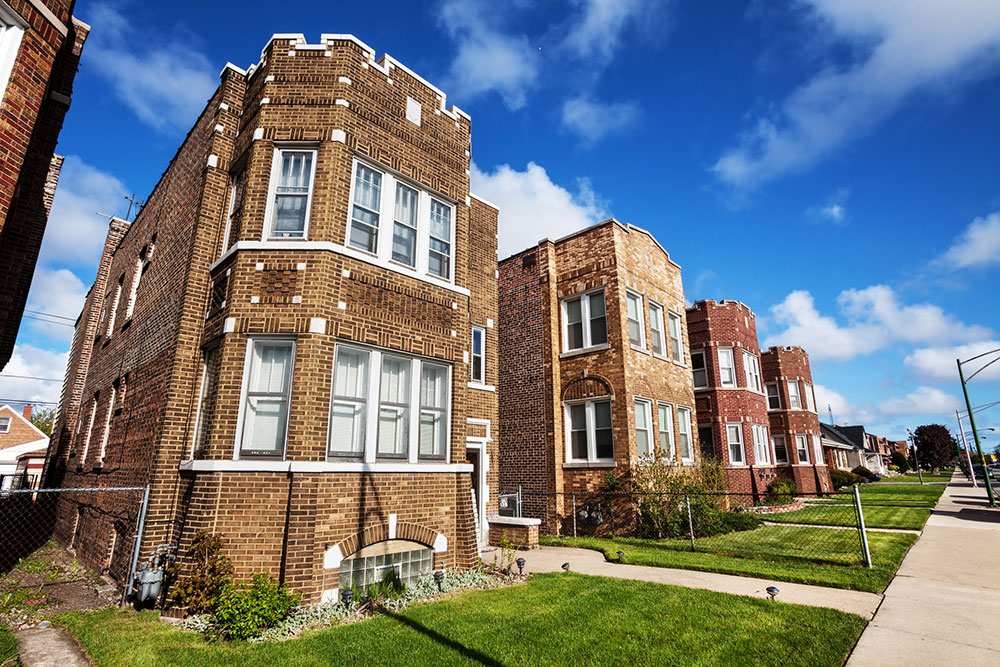Structural Racism in Chicago Is Tied to Premature Births
New research shows how discriminatory policing and unequal schools can negatively impact pregnancy
Get all our news
Even when stress is anticipatory in nature, [like] concerns about the prospect of a loved one having a violent interaction with police, it can have repercussions for biological processes that are important to health.”
Greg Miller
IPR health psychologist

In her book Under the Skin: The Hidden Toll of Racism on American Lives and on the Health of Our Nation, journalist Linda Villarosa writes about the puzzling disparity in birth weight between the children born to two generations of women. The mother, a Black immigrant who grew up in poverty in Jamaica, delivered her daughter at a normal birth weight after arriving in the U.S. When her daughter, who went on to attend Stanford University and work as a physician, delivered her second child, the baby only weighed 5 pounds and 2 ounces.
Their story highlights the ways that racism, not race, can lead to stark differences in outcomes like low birth weight and preterm births. Black women in the United States are roughly 50% more likely than White women to give birth prematurely—putting both the mother and baby at risk of poor health later in life. A new study co-authored by IPR researchers explores some potential reasons behind these disparities.
The research shows that Black women living in Chicago neighborhoods with discriminatory law enforcement practices and unequal schools that lacked resources were more likely to give birth preterm compared to Black women in neighborhoods without these characteristics. These findings may help explain why Black women experience disproportionately high rates of preterm birth and identify those most at risk for delivering their babies early.
The study was co-authored by Feinberg assistant professor Alexa Freedman, obstetrician, gynecologist, and IPR associate Ann Borders, IPR health psychologist Greg Miller, and their colleagues.
“Our goal was really to identify specific domains that could be intervenable or amenable to change through policy or practice changes to improve health outcomes,” said Freedman, a former IPR postdoctoral fellow.
The researchers looked at the birth records of 96,326 patients who gave birth in six Chicago-area hospitals between 2008 and 2018, which included the patients’ demographic information and birth outcomes. They linked these birth records with the patients’ exposure to 22 different forms of structural racism in their neighborhoods. The different exposures fell into six categories that other researchers have identified as particularly relevant to Black women: law enforcement, housing, medical care, employment, education, and community infrastructure.
After adjusting for neighborhood socioeconomic status, the researchers discovered that Black patients in neighborhoods with racially unequal law enforcement practices and low-quality schools were more likely to deliver preterm, or before 37 weeks of pregnancy.
Law enforcement practices were defined as racially unequal if the neighborhood had higher rates of incarceration, complaints about police use of force, and traffic stops—especially for Black drivers. Schools were considered to perpetuate racial inequality if Black students were punished at higher rates than White students, students were punished at high rates overall, and they had a high number of teachers who were less experienced or frequently absent.
Miller says unequal law enforcement practices and schools may be linked to preterm births because of heightened stress. It’s taxing to live in a neighborhood where discriminatory encounters with the police are normal and can put family and friends at risk of mistreatment, legal difficulties, and incarceration, he argues.
“Stress, in turn, can trigger behavioral and physiological changes that increase vulnerability to adverse pregnancy outcomes and other health problems,” Miller explained. “Even when stress is anticipatory in nature, [like] concerns about the prospect of a loved one having a violent interaction with police, it can have repercussions for biological processes that are important to health.”
This research builds on previous work by Freedman, Miller, Borders, and IPR Director Andrew Papachristos showing that Black women living in neighborhoods with more complaints about excessive use of police force were at higher risk of giving birth early. They also find a link between preterm births and living in a neighborhood with higher eviction rates.
The connection between school environments and reproductive health is a novel finding, and one that Freedman found interesting since the majority of patients were out of high school when they gave birth. While the study data do not explain why certain types of schools could impact pregnancy later in life, Freedman says other research by Miller and IPR health psychologist Edith Chen shows that Black students who attended a school with an unwelcoming environment or that disproportionately punished Black students were at greater risk of poor health years later.
While Miller says this study gives some direction about which policies and practices impact birth outcomes, more research is necessary to understand how and when to implement interventions to help mothers.
“From these data alone, we don’t know if you’d need to change policing practices directly—which would be hard to do and take a long time if you could—or instead develop interventions that could ameliorate the psychological stress those practices create for women,” he said.
The researchers plan to apply these measures to other studies looking at pregnancy and other health issues with large racial differences in outcomes, such as heart disease.
Alexa Freedman is assistant professor of preventive medicine at Feinberg School of Medicine. Ann Borders is adjunct assistant professor of medical social sciences and an IPR associate. Greg Miller is the Louis W. Menk Professor of Psychology and an IPR fellow.
Photo credit: iStock
Published: June 20, 2025.


